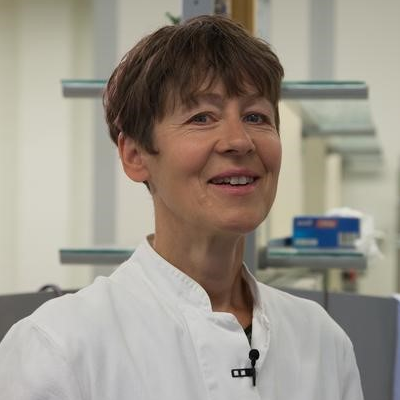Biomaterials for Stem Cell-Based Therapies in Regenerative Medicine
A special issue of Molecules (ISSN 1420-3049). This special issue belongs to the section "Materials Chemistry".
Deadline for manuscript submissions: closed (30 April 2019) | Viewed by 10706
Special Issue Editor
Interests: biorefinery concepts; biomass exploitation; biopolymer; isolation; characterization and utilization for construction; packaging, and biomedicine
Special Issues, Collections and Topics in MDPI journals
Special Issue Information
Dear Colleagues,
Research on biomaterials for tissue engineering and regenerative medicine covers various interdisciplinary aspects: Depending on the final application, scaffolds and drug release materials have to fulfill a number of very different, sometimes even contradictory requirements. For example, bone regeneration scaffolds are required to show sufficient mechanical stability when implanted, combined with controlled degradability, and replaced by natural bone thereby avoiding toxic degradation products.
Novel stem cell (SC) based approaches could allow individualized patient-specific solutions. However, stem cells are sensitively affected by their microenvironment (stem cell niche) which is defined by extracellular matrix properties such as elasticity and geometry. Compounds similar to the extracellular matrix (such as transforming growth factor-β, tension induced proteins, integrins and transient receptor potential) do influence and regulate cytoskeleton tension successively followed by gene expression and focal adhesion though the activation of a series of mechanical transduction events. In addition, various soluble factors (i.e., extracellular nucleotide, growth factors, and cytokines), mechanical forces (shear stress and blood pressure) and media conditions (pH, oxygen concentration) do significantly affect the stem cell fate. Scaffolds developed so far for stem cell differentiation have to be tailored to mimic the natural stem cell niche. Both, scaffold surface polarity and topography have to be adapted to the cell shape in order to support cell adhesion, proliferation and growth. Materials for encapsulation and time-controlled release of drugs supporting the SC differentiation process are required. Today, a broad variety of materials are under investigation including novel hybrids fabricated by additive manufacturing techniques, such as 3D printing or electrospinning.
Please be invited to contribute original articles, as well as survey articles specifying recent efforts in biomaterials used in stem cell-based therapies including natural polymers and related hybrids, their synthesis as well as structural analysis, in vitro and in vivo cell culture and signal transduction studies, pre-clinical and clinical trials.
Prof. Dr. Margit Schulze
Guest Editor
Manuscript Submission Information
Manuscripts should be submitted online at www.mdpi.com by registering and logging in to this website. Once you are registered, click here to go to the submission form. Manuscripts can be submitted until the deadline. All submissions that pass pre-check are peer-reviewed. Accepted papers will be published continuously in the journal (as soon as accepted) and will be listed together on the special issue website. Research articles, review articles as well as short communications are invited. For planned papers, a title and short abstract (about 100 words) can be sent to the Editorial Office for announcement on this website.
Submitted manuscripts should not have been published previously, nor be under consideration for publication elsewhere (except conference proceedings papers). All manuscripts are thoroughly refereed through a single-blind peer-review process. A guide for authors and other relevant information for submission of manuscripts is available on the Instructions for Authors page. Molecules is an international peer-reviewed open access semimonthly journal published by MDPI.
Please visit the Instructions for Authors page before submitting a manuscript. The Article Processing Charge (APC) for publication in this open access journal is 2700 CHF (Swiss Francs). Submitted papers should be well formatted and use good English. Authors may use MDPI's English editing service prior to publication or during author revisions.
Keywords
- Biomaterials
- Bone regeneration
- Drug encapsulation and release
- Regenrative medicine
- Scaffolds
- Stem cells
- Stem cell niche
- Tissue engineering






